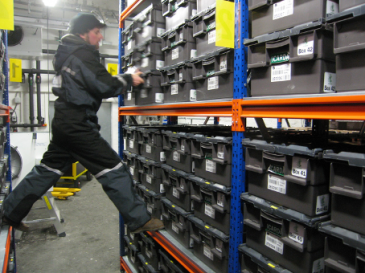
In 2008, the first global seed bank—the Svalbard Global Seed Vault (SGSV)—went into operation. Even before its opening, the SGSV had already attracted media attention and provoked all kinds of theological and eschatological parables.
The SGSV quickly received the nickname ‘Doomsday Vault’ while some commentators spoke of a ‘Noah’s Ark’ for plants. In fact, the purpose and location of this particular storage facility are reminiscent of an apocalyptic theme in a motion picture in which humanity tries to prepare itself for the end of the world. Built in the inhospitable environment of an Arctic desert on the Norwegian island of Spitsbergen, halfway between the mainland of Norway and the North Pole, the SGSV was designed to preserve the biodiversity of global agriculture and thus ensure global food security against future catastrophes. National plant research institutes and gene banks around the world working on the creation of useful new plant varieties have the opportunity to send copies of their variety collections to Spitsbergen and have them stored in the vault. In the event that the national collections are destroyed in the course of technical accidents, natural disasters or social upheavals, the vault offers the option to restore lost diversity and thus the possibility of genetic variety breeding on which modern agriculture so heavily depends.
”If damage to the planet such as the extinction of species is already occurring, technologies such as the SGSV promise to postpone irreversibility.”
On the homepage of the Global Crop Diversity Trust, one of the main sources of finance for the SGSV, the task is clearly outlined: ‘The Vault is the ultimate insurance policy for the world’s food supply, offering options for future generations to overcome the challenges of climate change and population growth. It will secure, for centuries, millions of seeds representing every important crop variety available in the world today. It is the final back up’.

The article argues that the SGSV expresses a security rationality that could be described as a “politics of reversibility”. The concept of reversibility refers to a slightly different time-theoretical problem than the ongoing debates in Critical Security Studies on the different modes of anticipating the future. While the latter are more concerned with the problem of preparing and preventing, the problem of reversibility is about how long a past event can still be reversed. Referring to the time-theoretical concept of the “doubled present” of the sociologist Niklas Luhmann it is argued that the SGSV generates an extended present within the passing time, in which past events can be treated as present and thus be corrected. By removing the seeds from their ecological relationships and then freezing them, the metabolic processes of life are halted and its irreversible process of becoming is reduced to a minimum. This gives plant scientists a possibility that life does not actually provide for: to return to any stage of evolution and reverse the extinction itself.
In this way, the analysis of the politics of reversibility contributes to a further understanding of how life is secured in the times of the Anthropocene. The politics of reversibility seems to be the logical form of security politics at a time where the catastrophe is no longer waiting in the future but is already present. If damage to the planet such as the extinction of species is already occurring, technologies such as the SGSV promise to postpone irreversibility. Against this background, the SGSV seems to follow a modernist-reductionist paradigm of conservation that feels to be completely unsuitable to respond to the complex ecological problems of the Anthropocene. In the end, is it not precisely this kind of reification of life that caused us the mess of the Anthropocene? Although this is undoubtedly correct, I hesitate to reject the gene bank as a security technology per se. In view of the speed at which the loss of species is proceeding, the question, as Thom van Dooren puts it, can no longer be whether or not to bank, but how to situate the technology of the gene bank in such a way that it not only serves the security needs of the global North. If this can be achieved, the politics of reversibility could indeed become one of the arts of living on a damaged planet.